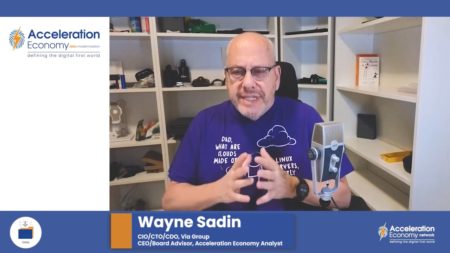Latest quarterly financials reflect Microsoft and Google Cloud leveraging their superiority in AI and enterprise software to grow twice as fast as AWS as the AI-plus-Cloud Revolution transforms how the business world works.
Board of Directors
The Securities Exchange Commission (SEC) now requires disclosure of material cybersecurity incidents and processes for managing cybersecurity threats, reflecting the increasing recognition of technology’s role in business and the need for governance in the digital landscape.
The upcoming SEC rules delve into cybersecurity transparency, incident reporting, and risk management procedures.
The 4 Ps Framework helps CIOs prioritize, patch, polish, and perfect their way into picking the right IT systems, processes, and data sources.
To better prioritize IT projects, break them down into four categories: strategic, regulatory/mandatory, break fix, and other, says Wayne Sadin.
Avoiding single points of failure is critical for companies, no matter if they are hardware, software or, in the case of “indispensable programmers,” people.
Wayne Sadin shares why the advent of generative AI puts pressure on organizations to tighten up their data and security strategies to avoid bias and protect sensitive data.
Qualified technology expert (QTE) directors bring a level of expertise that is valuable to boards in every industry, Wayne Sadin explains.
Wayne Sadin explains why multiple updates to crew scheduling software SkySolver won’t fix Southwest Airlines technical debt issues.
In this CXO Roundtable discussion, experienced board members Tony Uphoff, Janet Schijns, and Wayne Sadin discuss some important considerations for improving the composition of BODs.
Frank Domizio explains how a modern CISO can communicate security needs and strategies to top leaders, peers, and their cybersecurity teams.
CISO practitioner analyst Chris Hughes emphasizes why today’s CISOs need to prioritize their agenda to quantify risk, embrace zero trust, and fight talent burnout
Some companies have created a new seat at the executive table — Chief Remote Officer — and Kieron Allen explores the benefits and pitfalls along with direct perspectives from a CEO and CIO on this role
Quantifying cyber risk helps board members and other business leaders see the importance of cybersecurity investment. As Chris Hughes explains, the FAIR model offers a framework to do this.
Despite a perfect storm of disruption, demographic shifts and a pandemic changing the nature of work, CIOs have unprecedented opportunities. Gain insight on how take advantage of them in this guidebook featuring wisdom from CIO Kenny Mullican.
In Episode 45 of the CXO Minute, Wayne shares his recent experience working with the Prison Entrepreneurship Program (PEP), and encourages executives to “do good in the world” with this and similar initiatives.
In Part 3 of this CIO guide to “getting a seat at the table,” Kenny and Wayne explain why IT execs must interact with CXOs and all levels of the organization to better effect digital transformation.
In Episode 44 of the CXO2 Minute, Wayne continues his examination of a CISO’s place within an organization and explains why boards are responsible for understanding all sides of technology.
In Episode 44 of the CXO2 Minute, Wayne discusses why CISOs don’t sit on the Board of Directors despite the growing importance of cybersecurity measures.
A new paradigm shift is starting to unfold: the Metaverse. So, what does this shift mean for business leaders, executives, and boards?





















